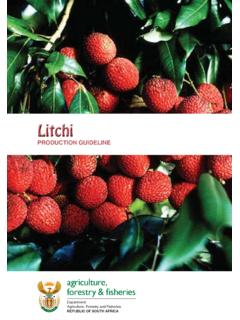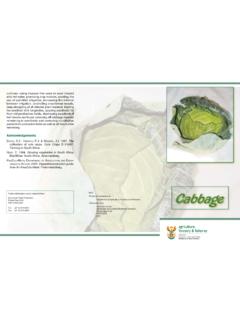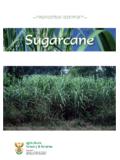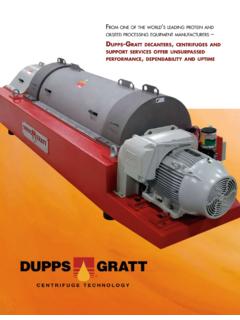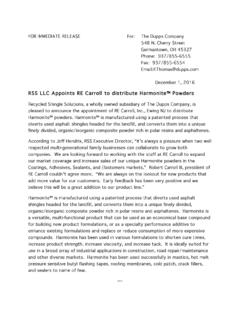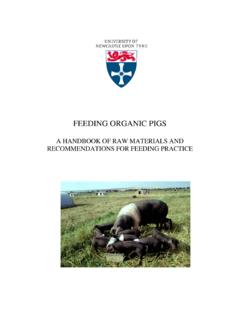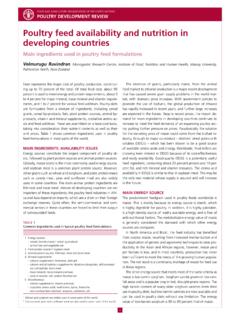Transcription of Contents
1 Untitled1 Contents Introduction Nutrition Diseases Management Breeding pigs Housing Economic considerations Publications and information Glossary 2002 Printed and published by the Department of Agriculture and obtainable from the Resource Centre, Directorate Agricultural Information Services, Private Bag X144, Pretoria 0001, South Africa Illustrations by Ronelle Stoltz file:///Z|/docs/ [2013/11/27 12:21:38 PM]Introduction Introduction The profit (money) made by the pig farmer depends on the number of pigs sold per sow on the farm over a period of one year. The profit made is therefore influenced by the ability of the farmer to manage the farm in such a way that the sows produce a maximum number of pigs that can be marketed in the shortest time possible.
2 Good management means: Good housing that will allow the efficient production of marketable pigs. Proper disease control. Clean conditions and precautionary measures on the farm will make disease control easier. The use of good, highly productive breeding animals that grow efficiently, use their feed efficiently, produce carcasses with a low fat content and produce up to 20 and more piglets per year. Correct feeding. The farmer must know the feed requirements of the different age groups and feed each group the correct quantity of the right mixture. Pig farmers should be aware that profit margins can differ from year to year. The price of feed and the market price of pigs go up when pig meat is scarce and drop again when there is an oversupply.
3 Likewise, feed prices change, particularly that of maize which is included at a rate of up to 60 % in pig feeds. Feed costs, however, amount to about 60 % of the total production costs. Therefore, when feed prices are high and pork prices low pig farmers Contentsfile:///Z|/docs/ [2013/11/27 12:21:39 PM]Nutrition Nutrition Feed is the biggest cost factor in pig production and can amount to 60 to 80 % of the total cost of production. Correctly fed pigs will ensure: efficient reproduction and growth efficient feed utilisation good-quality meat maximum profit for the must therefore be fed the correct quantity of the right feed mixture.
4 The nutrient requirements, especially digestible energy and protein , of the various production classes differ. These production classes include: boars and pregnant sows sows with piglets young pigs, three to 10 weeks old growing pigs up to slaughter at a live weight of 60 or 90 mixtures can either be bought or the farmer can mix them himself. The latter is less expensive but it is important to consult an expert on how to mix the feedstuffs that have to be included in the mixtures for each of the production classes. The various feedstuffs must be weighed off correctly before mixing. Feed mixtures for each of the pig classes must contain the right quantities of the following nutrients, namely: digestible energy (DE) proteins minerals different mixtures must be used.
5 Feed sources Grains Grain constitutes between 55 and 70 % of the total feed mixture. The grain in a mixture provides mainly energy (between 60 and 80 % of the total DE in the mixture). Although grain is mainly an energy source with a low protein content , it also contributes substantially (30 to 60 %) to the protein content of the mixture. Maize is used as a grain source in pig feeds because it is high in DE and low in protein and therefore used mainly as an energy source. Grain sorghum has a nutritional value similar to that of maize. Provided sweet sorghum (low tannin) varieties are used, sorghum can be substituted for maize on an equal basis in feed mixtures.
6 Feed-grade wheat, when available at a cost not exceeding 20 % above that of maize, can also be used. The protein content of wheat is usually higher and the DE content lower than that of maize. Using wheat in stead of maize in feed mixtures could lead to considerable savings in protein costs. Wheat must always be coarsely ground when used for file:///Z|/docs/ (1 of 6) [2013/11/27 12:21:40 PM]Nutritionfeeding pigs. Barley is included mainly as a grain source in the Western Cape. It has a higher fibre content and a lower digestible-energy content than other grain types. Barley should not comprise more than 70 % of the grain component of a mixture.
7 Oats can be used but not more than 40 % should be included in mixtures for growing pigs and 60 % or less in mixtures for finishing pigs. Grain by-products Grain by-products such as wheat bran, maize bran, maize leaves, maize-stalks and maize-cobs are used to dilute the DE content of the mixture. Brans have a protein content higher than that of grains and are also relatively inexpensive. Wheat bran is the most popular DE diluent used in pig feeds. It is usually cost effective and has a laxative effect in pigs. When seasonal shortages occur, other diluents such as maize bran, maize leaves, maize-stalks, maize-cobs and lucerne can be used.
8 Hominy chop, a by-product from the maize-milling industry, can be used when available at a reasonable price. It is a product that can vary a great deal depending on the miller it is bought from. It is higher in fat content than maize and can be used as a partial replacement for maize. plant protein sources Oilcake meals Soya-bean oilcake meal and sunflower oilcake meal are plant protein feedstuffs usually included in pig feed mixtures. Soya-bean oilcake is of a higher and better quality protein and contains considerably less fibre than sunflower oilcake. Full-fat oilseeds Full-fat soya-bean and sunflower seed meals have a high oil content .
9 The oil results in soft fat in pig carcasses. Therefore, the inclusion of these two feedstuffs, if fed in combination with maize, must be limited in rations for finishing pigs. Full-fat soya-beans must be heat treated before use to destroy a substance (trypsin inhibitor) which reduces the growth rate of pigs. Lucerne Lucerne is also used as a DE diluent in pig feed mixtures. It has a high fibre and low DE content . Therefore, the inclusion of lucerne in feed mixtures for pigs must be limited. Lucerne also varies much in composition depending on the growth stage when cut, and on the extent of leaf loss during drying and baling. Animal protein sources By-products of the animal and fishing industry can be used as animal protein sources for pigs.
10 Fishmeal Fishmeal is the most frequently used and best protein source to include in feed mixtures. It also has a high DE content . file:///Z|/docs/ (2 of 6) [2013/11/27 12:21:40 PM]NutritionBlood and carcass meal Bloodmeal has a very high nutritional value. Do not, however, use more than a maximum of 5 % in feed mixtures because it is unpalatable. It becomes burnt easily during processing, which has a detrimental effect on the quality of the proteins. Carcass meal can vary a great deal in composition and quality because manufacturers use different products and processing methods. Heat damage during processing can downgrade the quality of the proteins in carcass meal.


